NAVAL BASE TRAINING FACILITY 1939 ONWARDS.
Please read further about 10th Light Horse Militia Regiment formed in 1939 – while 2nd AIF was being formed.
‘Militia units – such as 28th Battalion and 10th Light Horse Regiment – who were already organised and ready to train, were given precedence at their regular camps while the Second Australian Imperial Force (2nd AIF) was raised.’
‘All of these militia units using Naval Base as their exercise site meant that, when war was declared in September 1939, it was considered a regular militia site and was immediately held aside as army training grounds.’
10TH LIGHT HORSE, THE HORSES AND MEN
They came from the farm and the station,
They rode in from the far outback –
From the Gulf and Wyndham they hurried
Short cutting the drover’s track.
Then they sauntered ungainly and awkward,
These lantern-jawed Aussies and lean
To enlist in the Empire’s legions
Large-hearted dinkum and green.
And they fought as their fathers before them:
‘All in’ as a matter of course –
These Aussies of whipcord and sinew –
The men of the Tenth Light Horse.





Below: 25th Light Horse from Donnybrook.
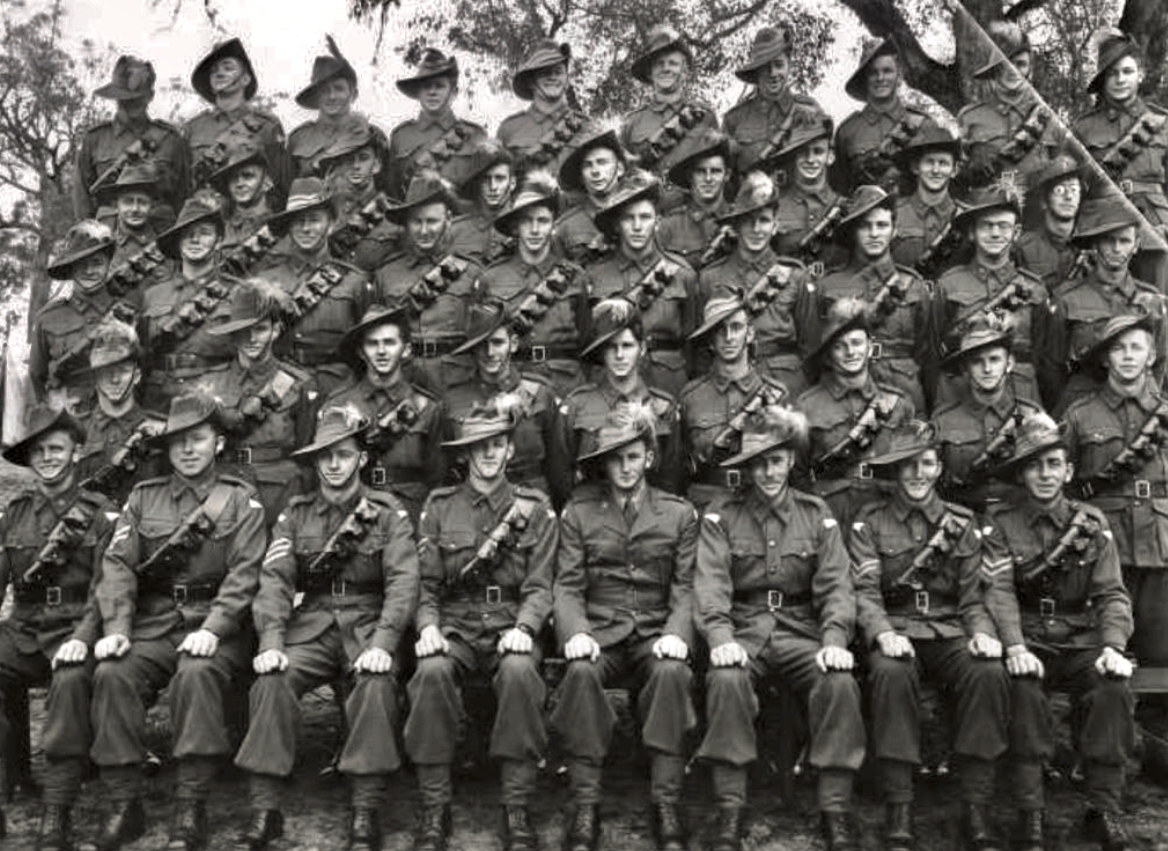
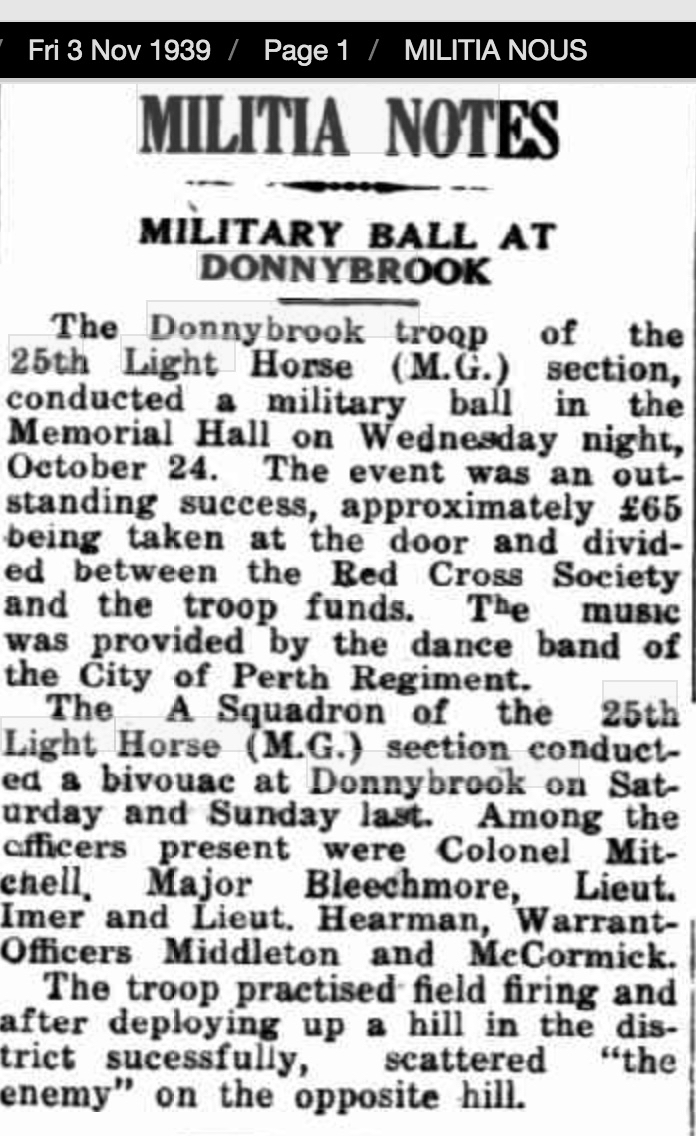
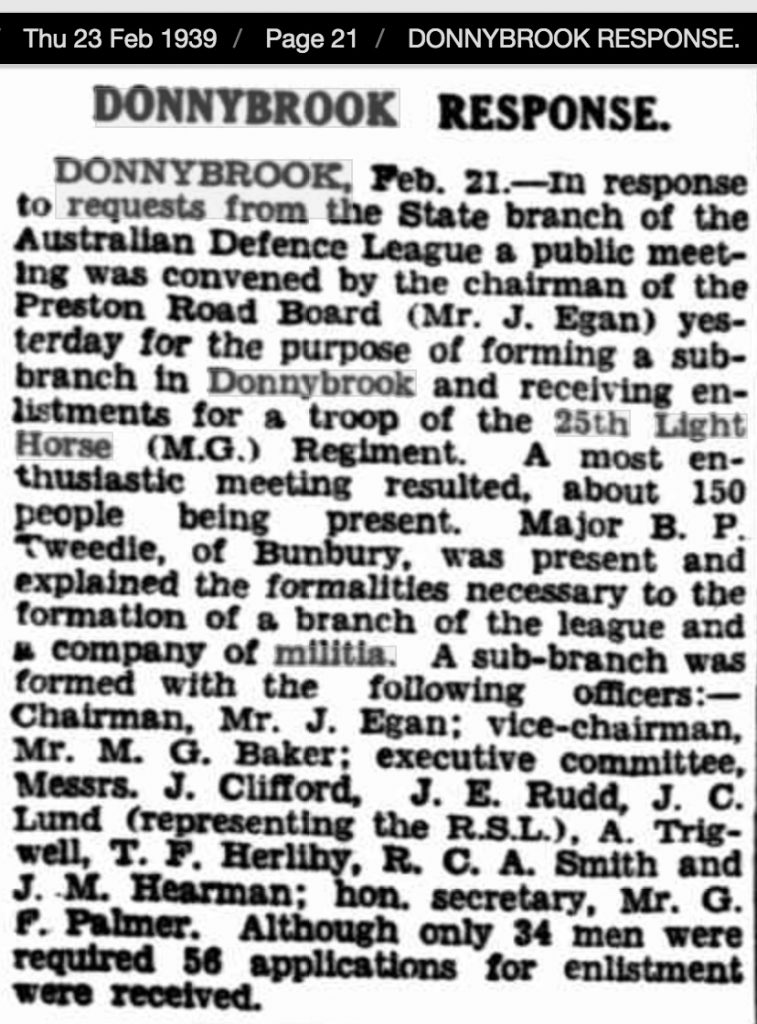
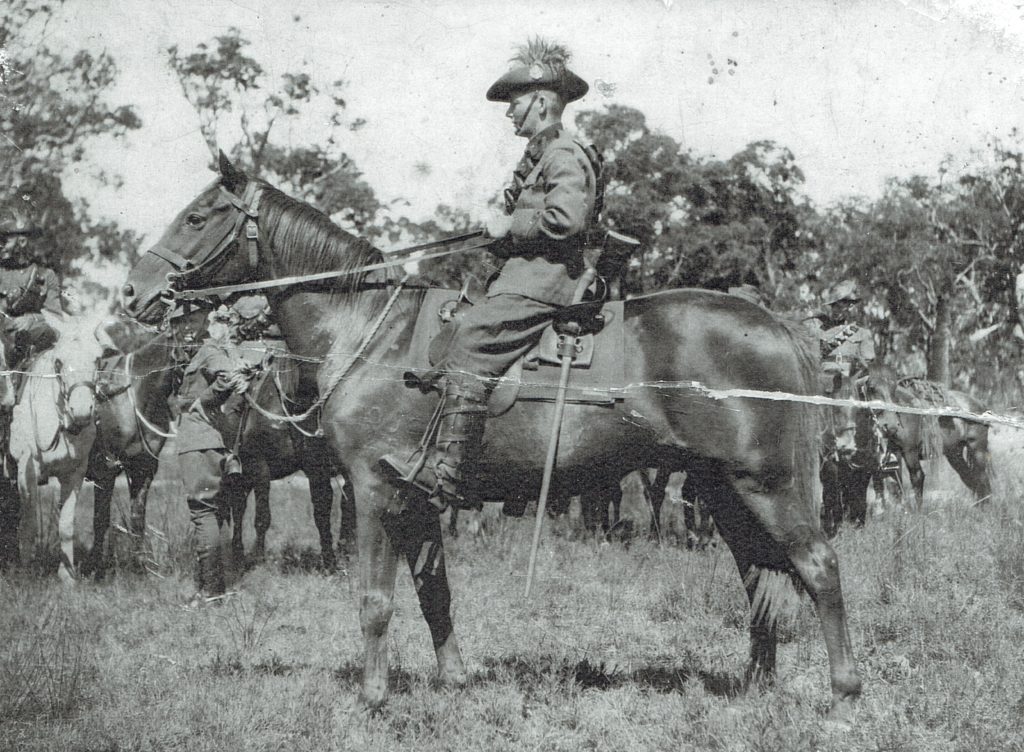
Below:1937 Lt.Col Anketell
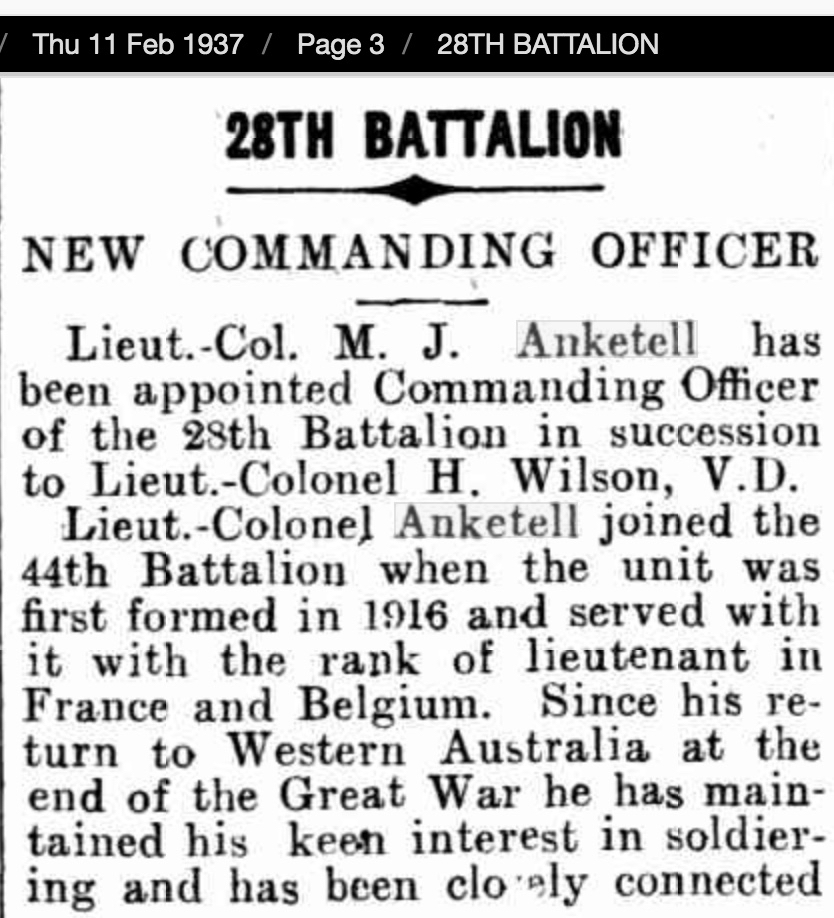
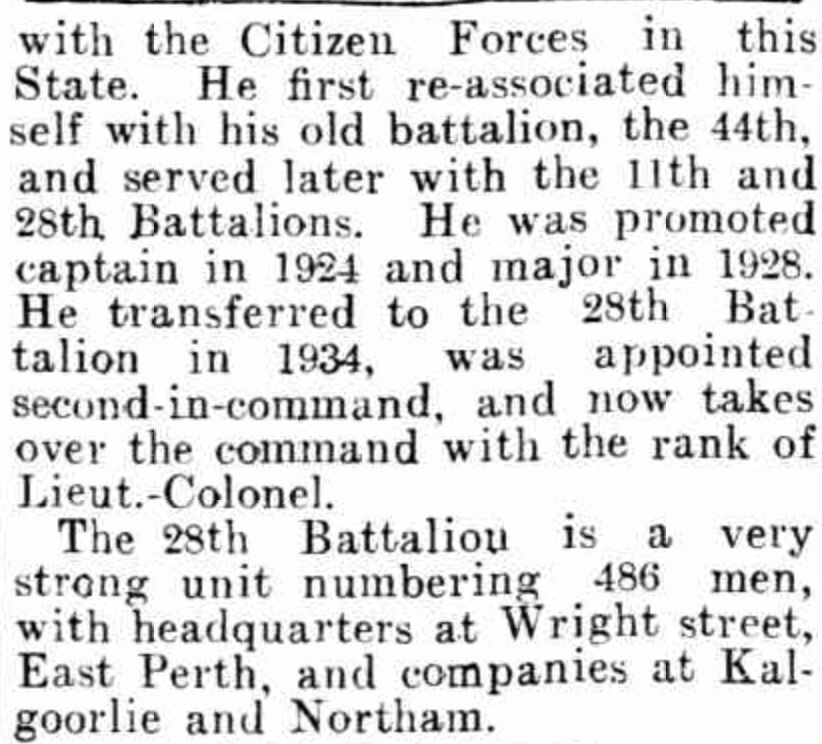
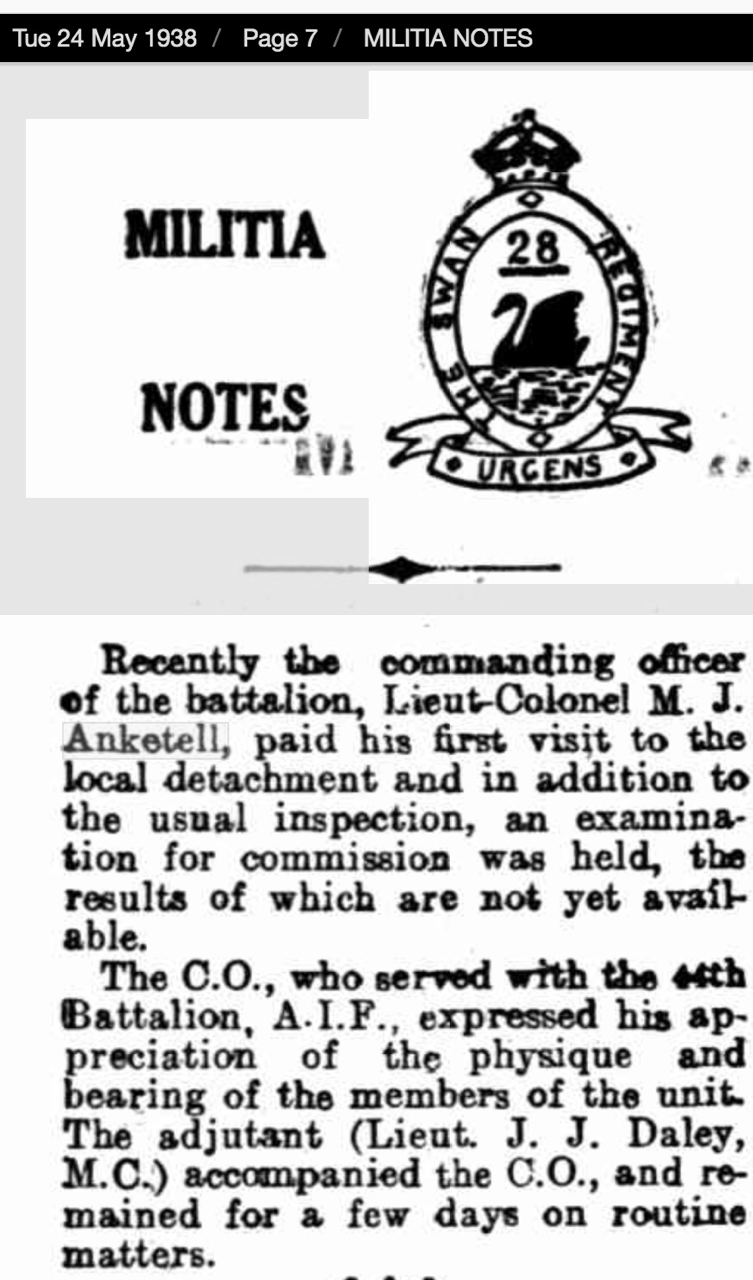
Below: Corporal Harry Green with 11th Battalion Militia – enlisted AIF 15 Jan 1941. He became Lieutenant WX10788 with ‘E’ Coy, Special Reserve Battalion, 2/4th MGB. Green was KIA 11 Feb 1942 Singapore in a Japanese ambush. He was 22 years old.
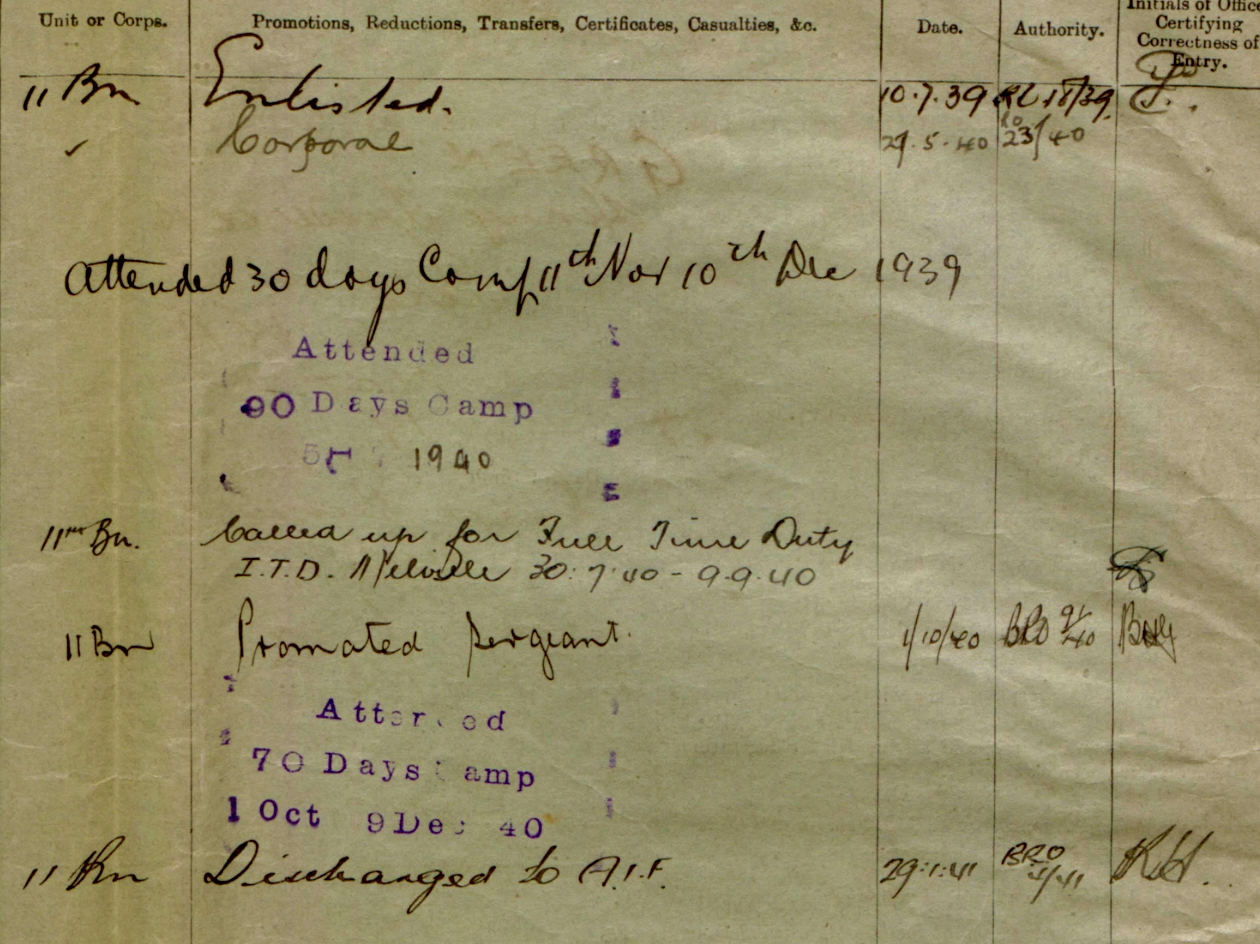
WESTERN AUSTRALIAN MILITIA
(from AWM with our thanks and acknowledgement)
‘After the First World War the defence of the Australian mainland lay with the part time soldiers of the Citizens Military Force, otherwise known as the Militia. The Militia was organized to maintain the structure of the First AIF and kept the same numerical designations. In 1936 Perth’s 16th Infantry Battalion became the “Cameron Highlanders of Western Australia” and was linked with the Queen’s Own Cameron Highlanders. The 16th carried out the traditions of the Cameron Highlanders by having an “excellent” band of 16 pipers and seven drummers.
Like the other battalions in the Western Australia’s 13th Brigade (11th and 28th Battalions) the 16th had a long war primarily carrying out garrison duties. As part of the 4th Division, the 13th Brigade remained in Western Australia and during the second half of 1942 was III Corps’s main infantry force. III Corps was responsible for the state’s defence. In 1943 the 13th Brigade moved to the Northern Territory, where the 28th was based at 49 Mile Creek. The brigade’s commander, Brigadier Eric George Henderson McKenzie, held the longest brigade command of the war. McKenzie took over the brigade in June 1940 and relinquished command in May 1945 because of illness.
The long period of static garrison ended towards the end of 1944, when the 13th Brigade became part of the 5th Division. In late-November the brigade sailed to Jacquinot Bay in New Britain. It remained at the bay until mid-April 1945, when it moved to Wide Bay to relieve the 6th Brigade.
Rather than carry out a major offensive against the Japanese on New Britain, the much smaller Australian force instead confined the Japanese to Rabaul and the Gazelle Peninsula with active patrolling. It had been the 6th Brigade that had established the line across the Gazelle Peninsula, by patrolling between Open and Wide Bay. The 13th Brigade was to hold this line and patrol forward from it but did not make any major move beyond it into Japanese-controlled territory.
Based in the Bulus area, from the second week in April to the end of the Second World War, the 16th sent out daily patrols into the surrounding jungle around Waitavolo. But contact with the Japanese was limited.
After the war the 13th Brigade moved to Rabual, to assist in supervising the Japanese prisoners. In January 1946 the brigade returned to Australia and in February the 16th was disbanded at Puckapunyal.’
